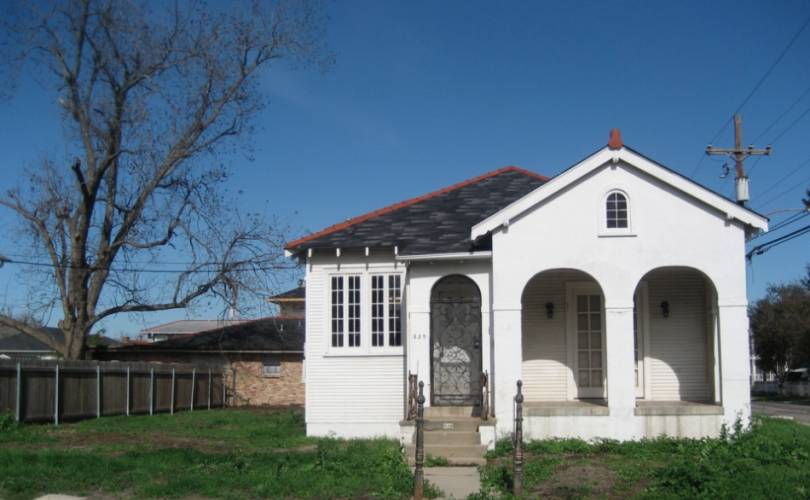Money-Saving & Energy-Saving Tips
1. Think and BUILD Small
This tip might be obvious…A smaller house needs less energy than does a larger house. And, if your house needs less energy, your utility bills will be lower. (Plus, when/if you want use solar power, it will take less solar panels for a smaller house to “go off the grid” than for a larger house.) Also, a smaller house will cost less to build and use fewer building materials than a larger house.
2. Use Recycled Building Materials
You can save money, give your house character, and help reduce the demand for new building materials, by using recycled building materials. To find some nice items at good prices, shop either:
- The Green Project, 2831 Marais St., NOLA 70117 (504)945-0240 warehouse
- Habitat Restore, 2830 Royal Street, NOLA, (504) 943-2240
- The Bank Architectural Antiques, 1824 Felicity Street , NOLA, (504) 523-2702
3. Insulate (with humidity in mind)
You can save a lot of money and energy by making sure your house keeps the air-conditioning inside and the heat outside in summer and the heating inside and the cold outside in winter. You can do this with insulation. But, installing insulation in hot and humid climates requires special attention.
Did you know that if you don’t have enough water proofing, mold can collect between the walls of your house? This occurs when either the humidity condenses on the interior of the external wall or condensation on the exterior of the interior wall (because of the difference between air-conditioned indoor temps and hot outdoor temps). Add the heat of an average New Orleans summer day and mold and mildew will likely form.
We’ve found on-line guides for insulation installation in humid climates:
4. Placement and Use of Windows
Where you place windows in a house can help with the passive heating and cooling of the structure. For example, south-facing windows allow the sun to shine into the home during the winter, heating the interior surfaces. During the summer, though, it is best to have overhangs on south-facing windows. It is possible to have overhangs that block the high sun of summer, but allow the low sun of winter in.
Windows can also be used to reduce the lightning needs inside the house. Arrange furniture to take advantage of natural light during the day. [And, be sure to replace all your light bulbs with compact fluorescent bulbs (once the old ones burn out).]
For more info, visit EERE Guide: Windows, Doors, and Skylights
5. Landscape around your Home
The plant and tree life around you house can help with the energy savings. A house shaded by trees is a much cooler house during the summer. Also, keep in mind that during the winter, the leaves are gone off the deciduous trees, so the winter sun can still shine into the home.
More info: Landscaping for Energy Savings
6. Use ENERGY STAR Appliances and Products
ENERGY STAR is a government program that offers businesses and consumers energy-efficient solutions, making it easy to save money while protecting the environment for future generations.
Energy efficient choices can save families about a third on their energy bill with similar savings of greenhouse gas emissions, without sacrificing features, style or comfort. ENERGY STAR helps you make the energy efficient choice.
The ENERGY STAR website lists products, tax credits and rebates: www.energystar.gov
7. Consider getting a Solar Water Heater
A solar water heater uses the sun’s warmth rather than electricity or gas to heat water for your home, pool or spa. A basic system consists of one or more black flat-plate collectors mounted on a roof. The collector absorbs the sun’s heat and transfers it to water that circulates through tubing in the collector.recycleworks.org
More info: EERE Guide: Solar Water Heaters
8. Install a Radiant Barrier
Radiant barriers are materials that are installed in buildings to reduce summer heat gain and winter heat loss, and hence to reduce building heating and cooling energy usage. The potential benefit of attic radiant barriers is primarily in reducing air-conditioning cooling loads in warm or hot climates. Radiant barriers usually consist of a thin sheet or coating of a highly reflective material, usually aluminum, applied to one or both sides of a number of substrate materials. These substrates include kraft paper, plastic films, cardboard, plywood sheathing, and air infiltration barrier material. Some products are fiber reinforced to increase the durability and ease of handling.www.ornl.gov
More info: EERE Guide: Radiant Barriers




